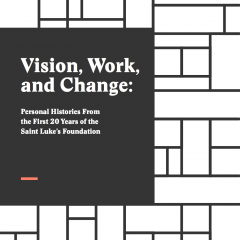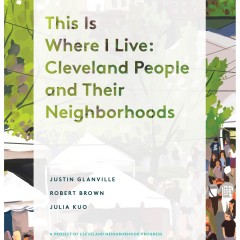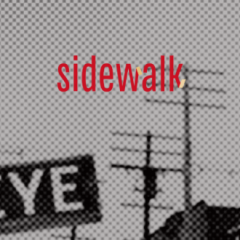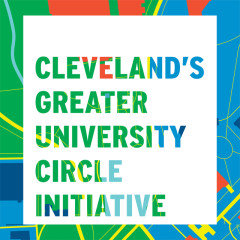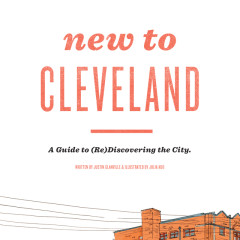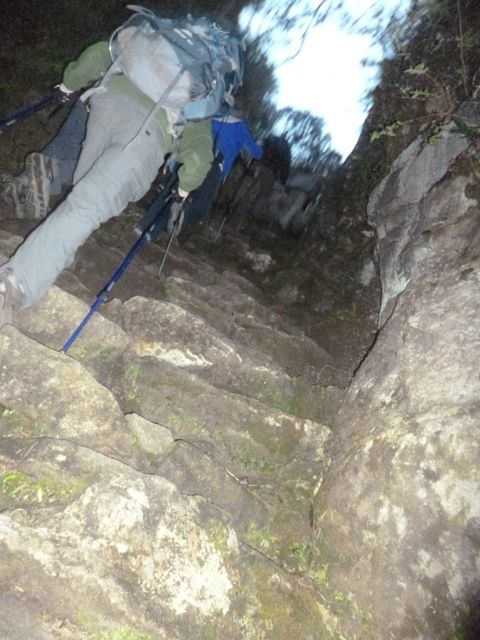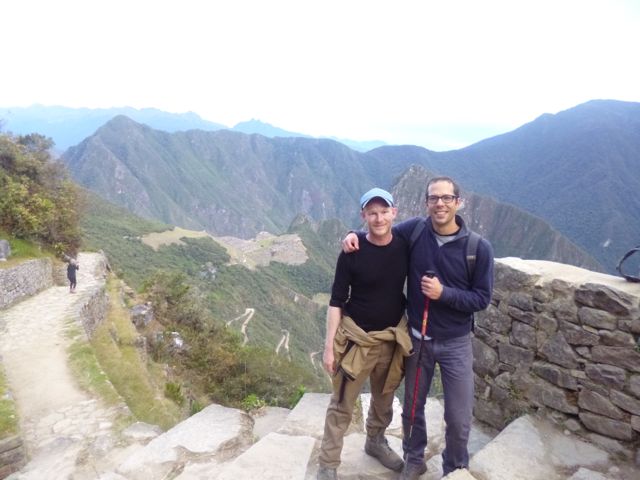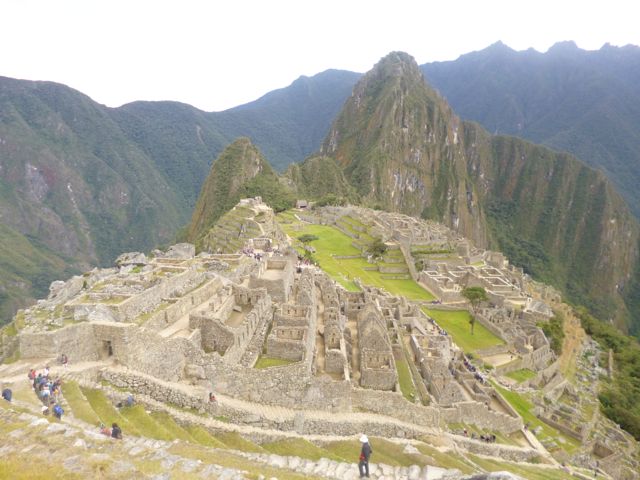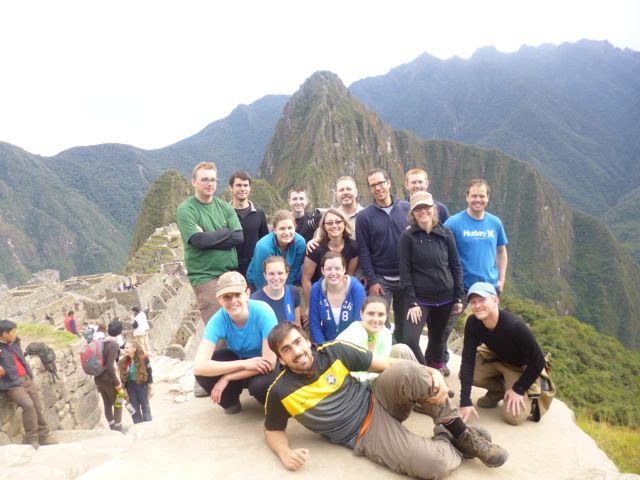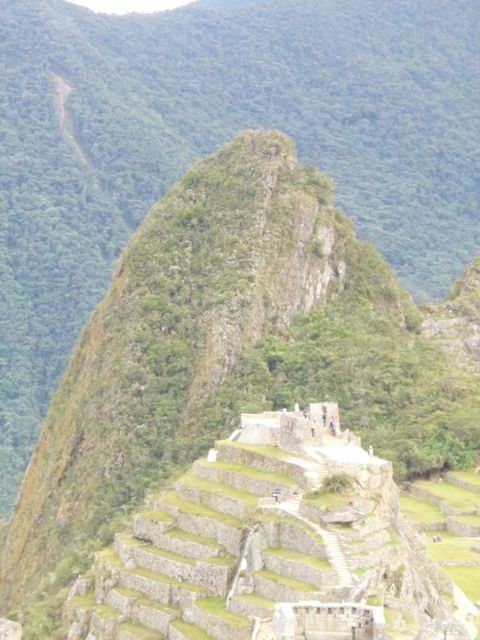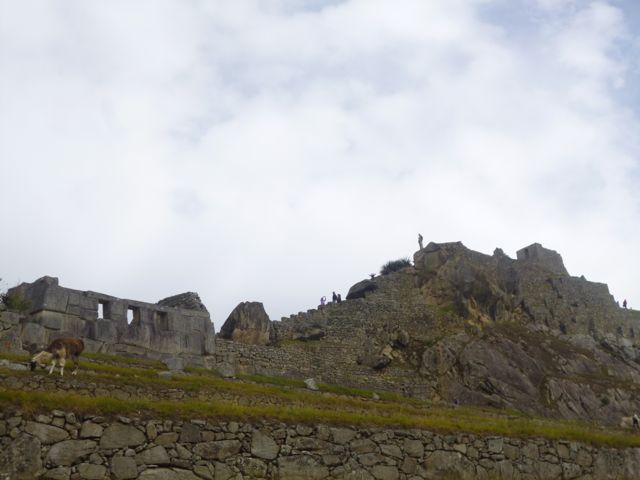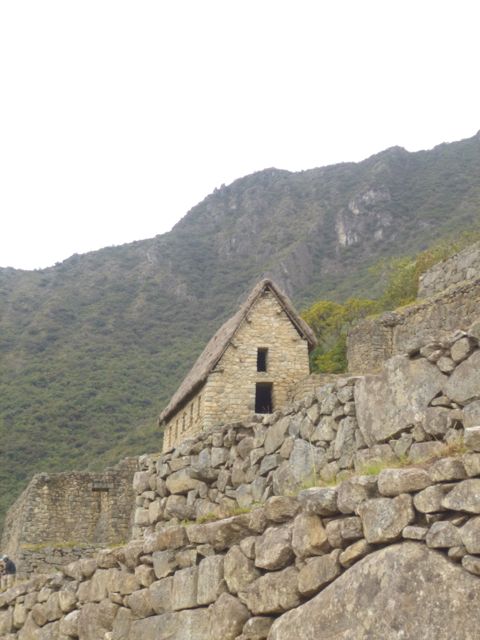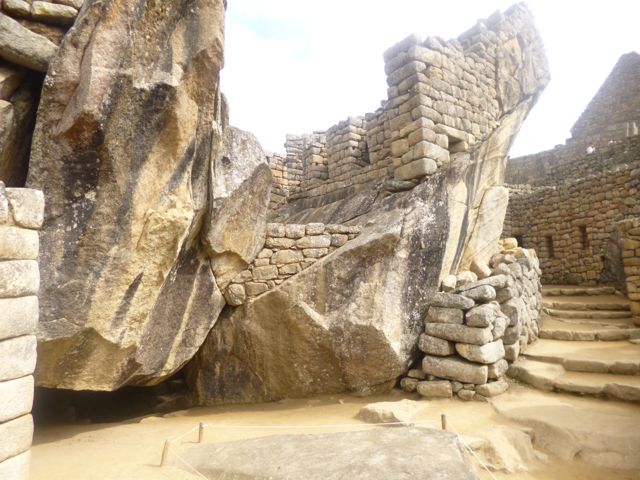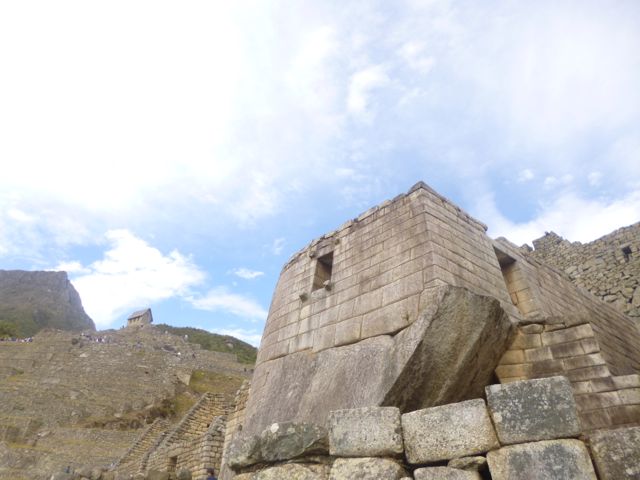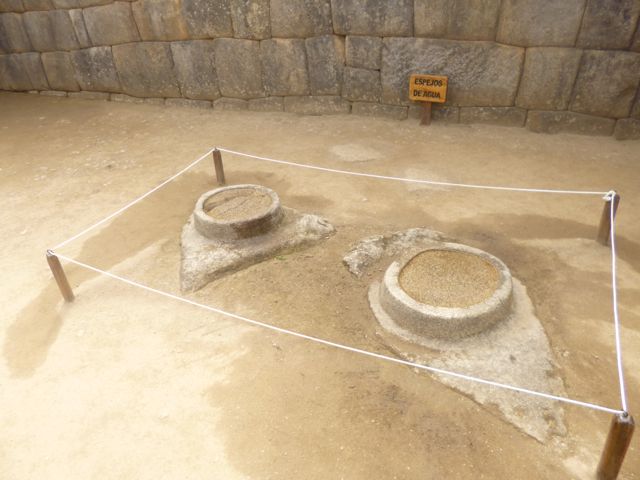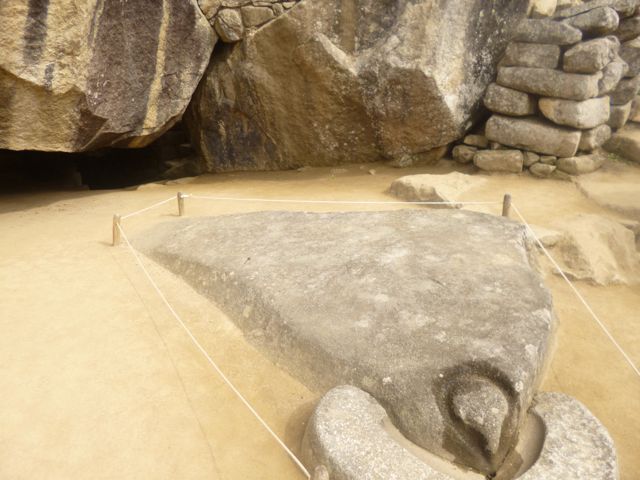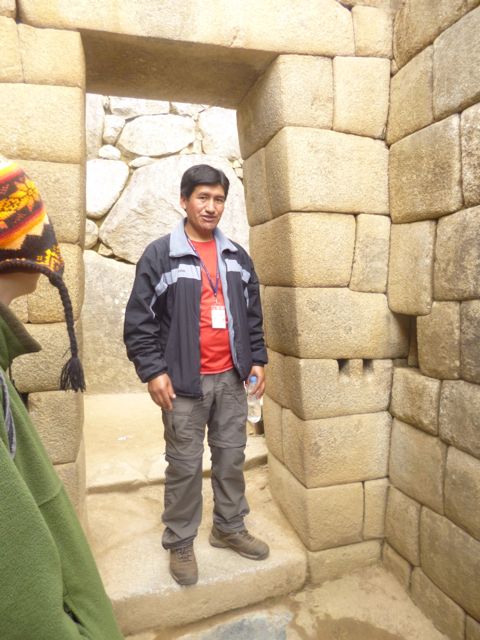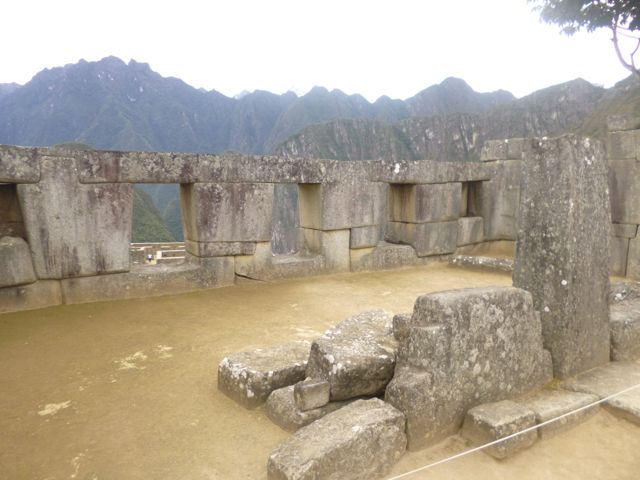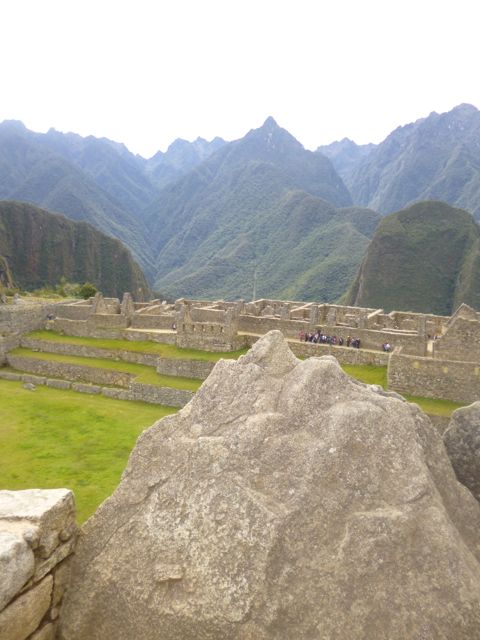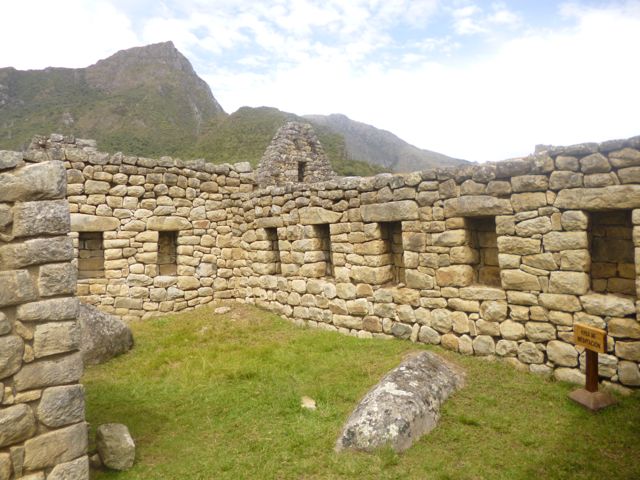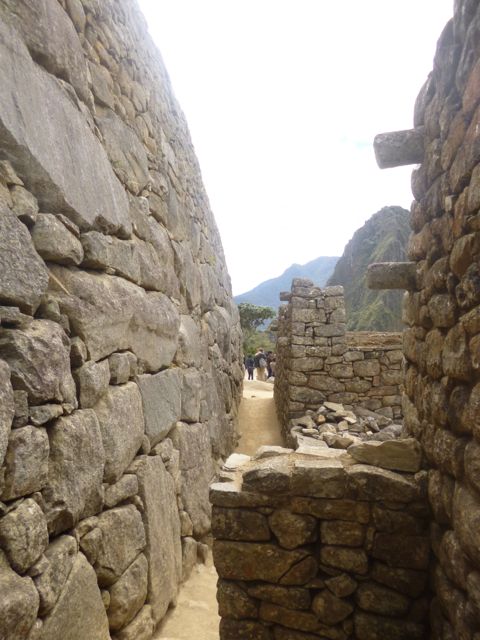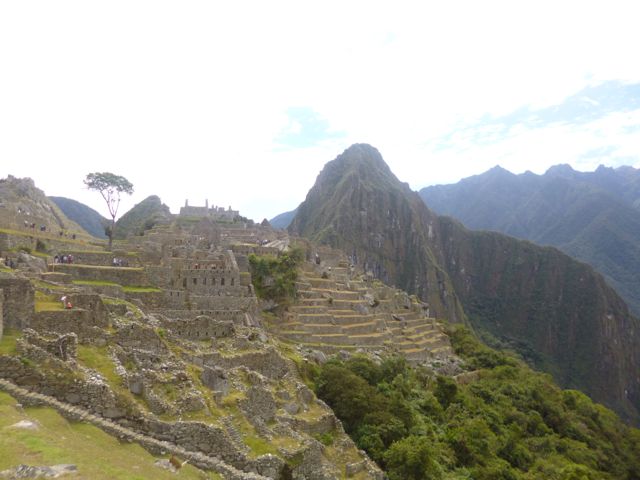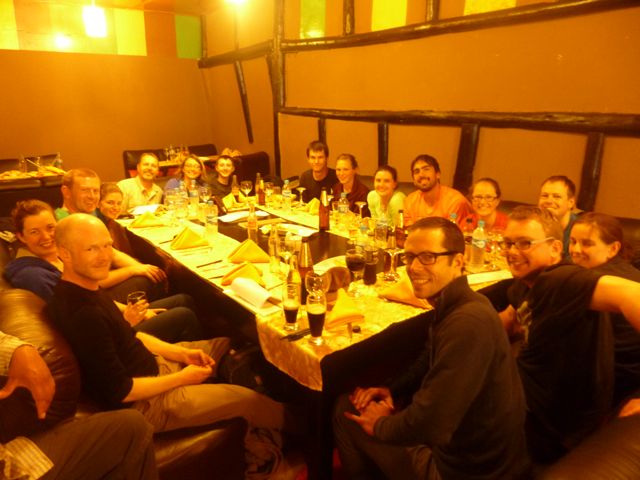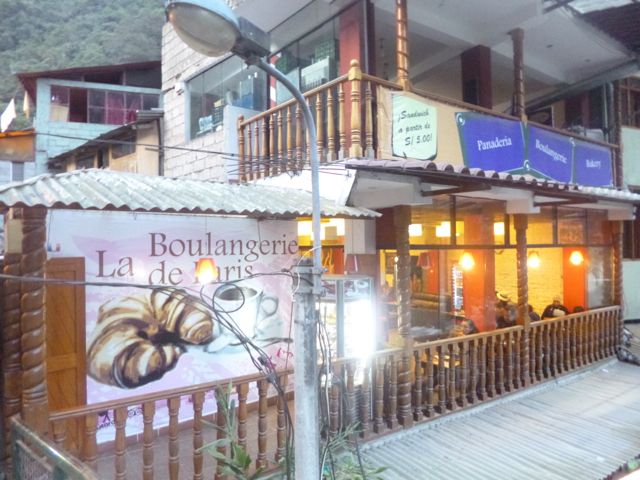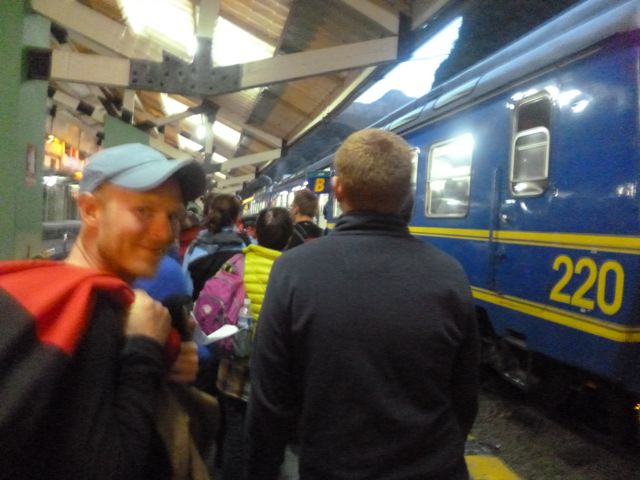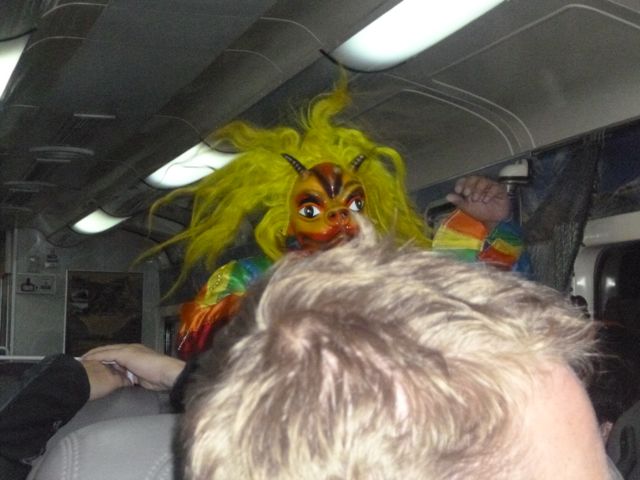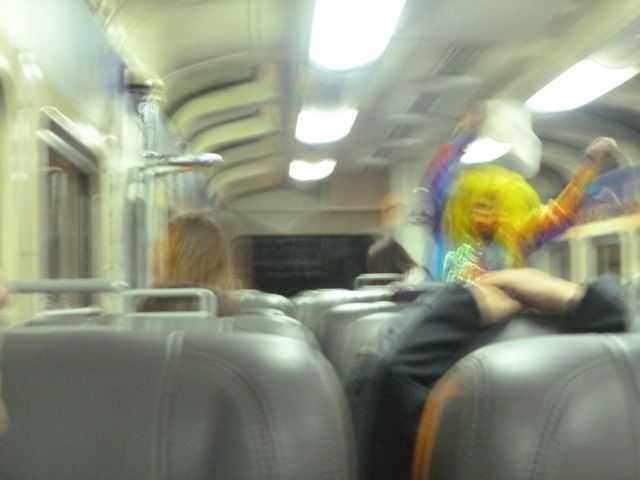I don’t know what time I actually woke up, but it was before 3:25 a.m., because I could hear the marching of porters behind and in front of our tent — preparing food and water, I imagined. A few minutes later, there came the official half-whispered call outside our tent: “Buenos dias! Coca tea!”
I’d thought I wouldn’t be hungry for breakfast at 3:30 a.m., but of course I was ravenous. I gulped down a few rolls and some black tea — no Milo this morning. Then we all strapped on our headlamps in the pitch dark and set out to the first checkpoint, about a five-minute hike away.
Our group was the first in line, and we sat down on some hard benches to wait for the trail to open at 5:30. Again, I wondered with a yawn why it was so important to be first. I knew Machu Picchu would be a mob scene pretty much any way we sliced it. But a few minutes later, the militaristic Belgians showed up and defeatedly sat behind us on the bench. OK, now I kind of got it. There was some satisfaction in beating them.
People milled around nervously, some hiking back to camp to brush their teeth. Others snapped photos of the bedraggled lot of us, shivering in the dark.
“Will you lead us in an early morning yoga session, Justin?” asked a fellow hiker.
“No,” I shot back. I’ve gotten a lot better at mornings as I’ve gotten older, but I’m still not that good.
When the gate finally opened at 5:30, we filed through. The trail was mostly flat, and we set a barn-burning pace, knowing that not only the Belgians but at least three other groups were on our heels. The secondary guide, Ronnie, brought up the rear, literally blocking them from passing us by zig-zagging back and forth on the trail.
Yes, the whole thing was ridiculous, anti-pilgrimage. But I decided to give in to the frenzy, to become a part of it. In a way, it felt good to rush after sitting for an hour and a half in the cold. And besides, those Belgians. Seth and I were near the back of the pack and we could practically feel their breath on our necks.
First light came and then the trail started to ascend again. Below, in the valley, we could hear the whistles of trains pulling into Aguas Calientes (from where you can take buses up to the site), each of them carrying dozens of tourists. Some of the slower hikers in our group stopped to rest, and the Belgians burned past them. Then came a final hiking challenge: a near-vertical stairway, 52 steps, known as the Gringo Killer. We scrambled up, panting. I pulled out my camera for a quick shot but didn’t dare stop moving.
And then, minutes later: There we were. At the Sun Gate, with Machu Picchu below.
Seth and I stopped for victory shots, still panting a little from the Gringo Killer stairs. (That switchback road you see in the background is the route the buses take up to the site.)
We rested here for a while, the Belgians having long since disappeared. Then there’s about a 45-minute walk down to the site. Along the way, we passed people coming up from the site who hadn’t bought a pass but wanted to see the Sun Gate. As they passed, I could smell them, the flowery scents of their shampoos and soaps and colognes. Their hair looked puffy and clean, their lips glossy. They were like another species. A clean species. But a species we all couldn’t help but think didn’t deserve to be here. No, to be at Machu Picchu you should be dirty! And smelly! And sleep-deprived!
No one said that, though.
Once we reached the site, its stunning situation took my breath away. All around the settlement were these perilously steep green mountains, like guardians watching over the city.
We took some classic tourist shots.
We went to the official entrance gate, where you have to show your passports, and then sat at some picnic tables eating snacks. It was only 8, but we’d already been up for nearly five hours and were starving. It felt weird for all of us, I think, to be back among the living, back among civilization. We hadn’t been hiking that long, but long enough to feel like trail-wisened aliens.
I went to the bathroom, and when I looked in the mirror I realized it was the first time I’d seen my face in four days. Somehow I looked less different than I’d imagined. Mosquito-bitten, a little sunburnt, but otherwise the same.
Casiano then took us on a three-hour tour of the site. After the early rise and subsequent adrenaline rush of racing to the Sun Gate, paying attention to someone talking for three hours was a huge challenge for a lot of us — myself included. There were a few times I came close to falling asleep on my feet.
Still, Machu Picchu amazed me. Possibly there’s never been a city more spectacular in setting or pleasingly organic in the way it conforms to its surroundings.
Here’s a house with a reconstructed roof:
Often, the Inca simply built buildings on top of rocky outcrops that already existed on site:
Here’s an astronomical observatory where the two shallow dishes would have been filled with water for observing the night sky:
Temple of the Condor, with the sacrificial altar in the foreground:
A burial crypt, with twisty-tidy masonry:
Really, the stonework is incredible all around.
Nowhere moreso than here… Look at the precision of these blocks and lines, no mortar needed!
Water still runs through this site too.
Some of the stonework was disrupted during the centuries when Machu Picchu was overgrown with trees and shrubs. In this case, tree roots (now removed) undid the remarkable craftsmanship.
A stone outcrop that mimics — either by design or coincidence — the mountain in the background.
The military district, including the large training ground that reminded me of the Campus Martius in Rome:
Casiano’s talk was increasingly spiked with passionate references to “The Spaniards” and how they’d dismantled this great society. I saw how much resentment he had about this, the adulteration of his ancestors by colonialists. That’s been such a theme of my travels, particularly in Easter Island and Peru: Ongoing resentment at colonialization. It’s an interesting contrast to the States, where those views (among Native Americans) have been so deeply buried and marginalized.
When the tour ended, we had about an hour on our own. I decided I just wanted to sit somewhere relatively secluded and soak up the feel of the place. I found this spot, in the military district, and as I arranged myself I noticed that I couldn’t have made a better choice: The sign says “Area de Meditacion.”
After about half an hour, a Spanish-speaking New Age group showed up and started om-ing. Feeling like an intruder, I discretely stood and left, taking a few more shots of the city.
Then it was on the tourist bus down to Aguas Calientes, where I met the group for one last group lunch at a restaurant.
Aguas Calientes is a modern town, built starting in the 1950s, and exists for the sole purpose of exploiting tourists. That said, it’s a serviceable place to get one’s post-Inca Trail needs met, including having your lundry done in two hours, checking email at one of a million Internet cafes and restocking on water and food — all of which Seth and I did, because we had about four hours to kill until our train would leave to take us back to Cusco.
The hot springs after which the town is named, by the way, are notoriously dirty, so we skipped them. Instead, we spent our time at a really lovely French cafe called La Boulangerie de Paris. Highly highly recommended for coffee and pastry.
The journey back to Cusco, when it did finally begin, turned out in many ways to be the most trying part of the trip. We boarded the train fine…
… but then it just sat. And sat. There was a broken-down train on the tracks in front of us.
An hour passed, and the stewards decided we needed some entertainment. Quechua music started blasting from the sound system, and this nightmarish creature appeared:
It gyrated and danced so erratically that it was hard to get a good look.
After a few minutes, it grabbed Bruno, of the Belgian couple, to dance:
And then just as quickly was gone.
This was hilariously bizarre, but when it was followed up by a “fashion show” of alpaca clothing, most of us began to lose our patience. I buried my nose in a book, just wanting to get to our hostal where I could have a shower and a bed.
When we finally crept into Ollantaytambo station, it was 10 p.m. We boarded a Llama Path bus to take us back to Cusco (still two hours away), and everyone promptly crashed. It was 11:30 when we arrived at the Plaza de Armas. We said hasty, exhausted goodbyes to the other group members, and Seth and I taxied back to our hostal.
By the time I showered (luxurious, but in a way also sad because it seemed to mark the official end of the experience, the official washing away) and packed my suitcase in preparation for my flight to Lima the next day, it was 1 a.m. I’d been awake for 22 hours. I don’t think that’s happened since my student newspaper days in college. I fell into bed and into something deeper than sleep.


